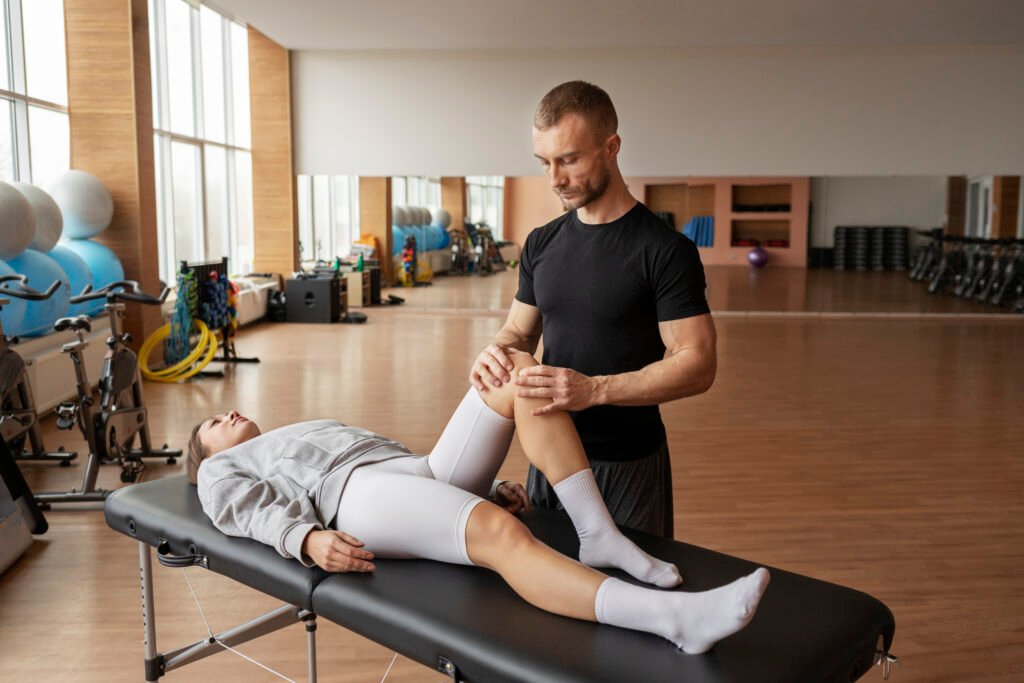7777 Warren Parkway, #370 Frisco, TX 75034
Welcome to Chiropractor of Frisco, TX !
-
Call for help: 469-516-2225
-
Infinity Wellness Chiropractic, Our Frisco Chiropractor focuses on maintaining health for people of all ages, helping patients pain,spine and prevent disease.
7777 Warren Parkway, #370 Frisco, TX 75034
Working Hrs : 9.30am to 6.00pm
Welcome to Chiropractor of Frisco, TX !
Call for help: 469-516-2225

Kinesiology tape, often called K-tape, has become a popular solution for those seeking relief from muscle and joint pain, particularly in athletes and individuals recovering from injuries. One of the most common areas for kinesiology tape application is the knee. Whether you’re dealing with a knee injury, chronic pain, or simply looking for extra support during physical activity, learning how to apply kinesiology tape properly can make a significant difference.

Kinesiology tape is unique because it’s designed to mimic the elasticity of human skin, which allows it to stretch and move with your body. It works by lifting the skin slightly, creating space between the skin and the underlying tissues. This process promotes better circulation, reduces inflammation, and can relieve pain. Let’s dive into How to Use Kinesiology Tape on the Knee, step by step, to maximize its effectiveness.
Before we get into the actual application process, it’s important to understand why kinesiology tape is effective for knee-related issues. This tape is an elastic cotton strip with an acrylic adhesive that can stretch up to 40% of its original length. It’s primarily used to reduce swelling, enhance circulation, and alleviate pain without restricting movement.
Kinesiology tape can help individuals who are dealing with various knee problems, such as:
Using kinesiology tape properly on your knee can provide several benefits, including pain relief, reduced swelling, increased stability, and improved circulation.
To get the best results from kinesiology tape, it’s essential to ensure the skin is properly prepared. This allows the tape to stick properly and stay in place for a longer period. Here’s what you need to do before applying the tape:

Now that you’ve prepared everything, it’s time to apply the kinesiology tape. Here’s a step-by-step guide:
1. Positioning the Knee
Start by positioning your knee in a comfortable but slightly bent position. A 30-degree bend is ideal for most applications because it allows the tape to provide optimal support to the knee joint. Make sure the knee isn’t fully extended, as this could reduce the effectiveness of the tape.
2. Cutting the Tape to Size
Kinesiology tape generally comes in rolls, and you’ll need to cut the tape into appropriate lengths depending on your knee’s needs. A typical application for knee support requires two strips of tape: one long piece to cover the main knee area and another smaller piece to support the patella (kneecap).
To prevent the tape from peeling, round the corners of each strip before applying it. This helps the tape stay in place for longer and prevents snagging.
3. Apply the First Piece of Tape
Begin applying the first piece of tape just below the knee cap, ensuring that the middle of the tape is aligned with the center of the knee.
4. Apply the Support Strips
The next step involves applying the support strips, which provide added stability to the knee joint. You can apply these strips either diagonally or horizontally across the knee, depending on the type of support you need.
5. Activate the Adhesive
After the tape is positioned correctly, gently rub the tape with your fingers. This helps activate the adhesive and ensures a secure bond between the tape and your skin. It also helps remove any air bubbles or wrinkles under the tape, which could cause discomfort or reduce effectiveness.
6.Test the Application
After applying the tape, gently move your knee through its range of motion to ensure comfort. The tape should not restrict movement. If you experience discomfort or tightness, adjust the tape or apply less tension. If issues persist, consult a professional.
Applying kinesiology tape to the shoulder can provide relief for a variety of shoulder injuries, including rotator cuff strains, tendonitis, and general muscle soreness. To start, it’s important to clean and dry the skin around the shoulder to ensure proper adhesion. Begin by cutting a strip of kinesiology tape, around 8 to 12 inches long, depending on the size of your shoulder and the area you wish to target.
Next, position the tape at the base of the shoulder blade or slightly below the shoulder joint, depending on where you need support. Apply the tape with minimal tension (about 25% to 50%) and stretch it upwards across the shoulder, following the natural curve of the shoulder joint. The tape should extend slightly past the top of the shoulder to offer full coverage and support. For more specific support, such as for a rotator cuff injury, you can apply a second strip horizontally across the shoulder. Stretch the tape lightly as you apply it to ensure it stays securely in place while still allowing for shoulder movement.
Once the tape is positioned, rub it gently with your hand to activate the adhesive and ensure it sticks well. Finally, move the shoulder through its range of motion to test for comfort. The tape should support the shoulder without restricting movement. If it feels too tight or uncomfortable, remove it and reapply with less tension. Kinesiology tape can remain in place for up to 3-5 days, providing constant support and aiding in the healing process.
Once applied, you can leave kinesiology tape on for up to 3-5 days, depending on the manufacturer’s instructions. During this time, it’s important to care for the tape to ensure it stays in place and continues to provide the necessary support.
Kinesiology tape is particularly effective in the following scenarios:
Removing kinesiology tape can be a bit tricky, especially if you want to avoid skin irritation. The key is to do it slowly and carefully to ensure a painless and smooth removal. First, begin by loosening the edges of the tape. Gently lift one corner or edge of the tape and peel it back in the direction of hair growth, not against it. This helps reduce discomfort. If the tape is stubborn or doesn’t come off easily, you can use a warm compress to soften the adhesive. Simply apply a warm, damp cloth to the tape for a few minutes to loosen it up. Once the tape has softened, try peeling it off again. If any adhesive residue is left on the skin, you can remove it by gently rubbing the area with baby oil, olive oil, or a specialized adhesive remover. Always ensure the skin underneath is clean and moisturized afterward to prevent irritation. Lastly, avoid pulling the tape off too quickly, as this can cause skin irritation or even damage. Taking your time and using a little warmth can make the process more comfortable and effective.
Kinesiology tape can be an effective tool in managing knee pain, supporting recovery, and enhancing mobility. Whether you’re recovering from an injury, dealing with chronic knee pain, or simply need extra support during physical activity, kinesiology tape can make a significant difference. By following the proper application techniques, you can ensure that you’re getting the full benefits of this versatile and non-restrictive therapy.
YouTube video: https://www.youtube.com/watch?v=AAqU0mu3-ic
February 5, 2025
January 29, 2025
January 22, 2025
January 3, 2025

Leave A Comment